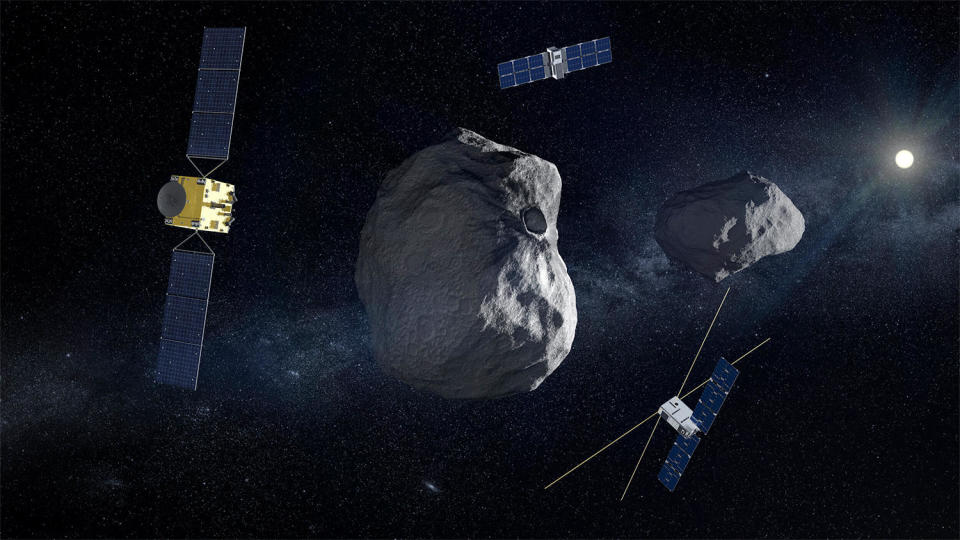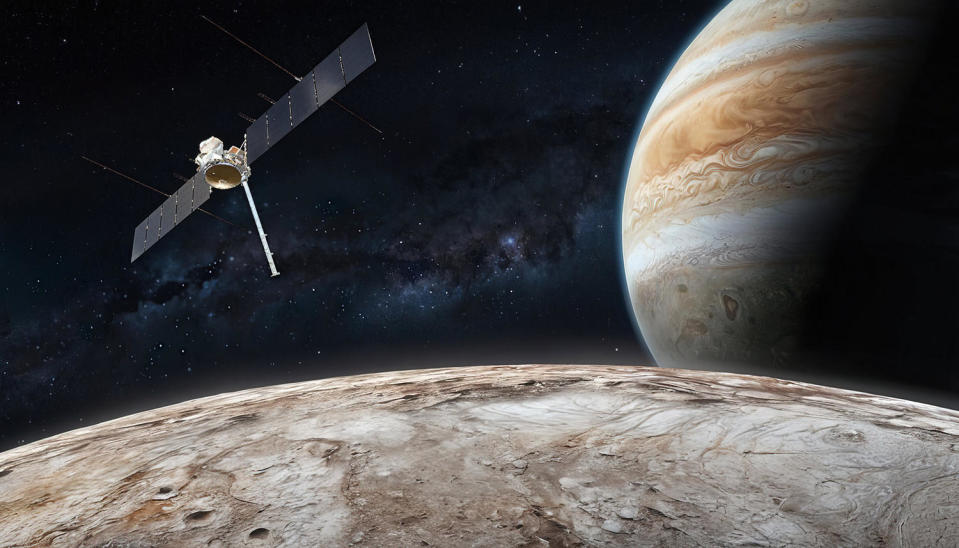After days of uncertainty, the Federal Aviation Administration announced Sunday that SpaceX had been cleared to proceed with the planned Monday launch of the European Space Agency’s $398 million Hera asteroid probe, stormy weather permitting.
With forecasters calling for an 85% chance of thick clouds and showers that would cause delays, Hera’s launch atop a Falcon 9 rocket from pad 40 at the Cape Canaveral Space Force Station is scheduled for 10:52 a.m. EDT on Monday. The prediction is that 75% will be ‘no-go’ if the launch is postponed until Tuesday.
‘The last hurdle is the weather. So please, please, I want you to do something about it!” Hera project manager Ian Carnelli joked with reporters on Sunday. “It’s the one thing I really have no control over. It looks like we might have an opening around launch, but it’s really impossible to say at this point.”

Hurricane MiltonMeanwhile, the cyclone poses threats all week is expected to cross the Florida Peninsula Wednesday and depart across the Atlantic Ocean near Florida’s Space Coast.
The launch of NASA’s $5.2 billion Europa Clipper mission, scheduled for Thursday from the Kennedy Space Center, has been suspended pending the storm’s passage.
“The safety of launch team personnel is our top priority and every precaution will be taken to protect the Europa Clipper spacecraft,” said Tim Dunn, senior launch director at NASA’s Launch Services Program.
“Once we have the all-clear, followed by facility assessment and any remedial actions, we will determine the next launch opportunity.”
Similarly, the return to Earth of three astronauts and a Russian cosmonaut aboard a SpaceX Crew Dragon ferry has been delayed by forecast bad weather.
Crew Commander Matthew Dominick, Mike Barratt, Jeanette Epps and cosmonaut Alexander Grebenkin launched to the International Space Station last March. They planned to undock on Monday and return to Earth to complete a 217-day mission.


But NASA announced Sunday that their departure would be postponed until at least Thursday due to expected bad weather. Crew Dragon ferries require calm winds and seas in the Gulf of Mexico or Atlantic Ocean to land safely.
As for the Falcon 9, the FAA approval only applied to the Hera launch, while the agency continues to oversee an investigation into the cause of a Falcon 9 second stage failure on September 28 and missing the intended reentry point in the Earth’s atmosphere over the Pacific Ocean. .
SpaceX routinely sends used second stages into the atmosphere for destructive breakups at the end of their missions to avoid potential collisions or other problems that could add to the space debris already in low Earth orbit.
The FAA wants to ensure that the problem is understood and corrected so that future reentries are conducted as planned, and to ensure that any debris that survives the heating reentry will harmlessly splash into targeted “footprints” that impact the ocean far away from shipping lanes and populated areas.
The second stage used for the Hera mission will send the spacecraft into deep space, using all its propellant. It will not return to Earth, so if a malfunction occurs it would not pose a safety risk.
“The FAA has determined that the absence of a second stage return for this mission adequately mitigates the primary risk to the public in the event of a recurrence of the mishap experienced with the Crew-9 mission,” said the agency said in a statement, referring to the most recent Falcon 9 flight.


“Safety will determine the timeline for the FAA to complete its review of SpaceX’s Crew-9 accident investigation report and when the agency will clear Falcon 9 to return to regular operations,” the statement concluded.
The FAA did not elaborate on plans to launch the Europa Clipper atop a Falcon Heavy rocket on Thursday for its long-awaited mission to Jupiter and its ice-covered moon Europa.
As with the Hera mission, the Clipper upper stage, the same one used for all Falcon family rockets, will not return to Earth. Instead, it will burn all its propellants to accelerate the probe to an Earth escape velocity of 25,000 miles per hour.
But FAA approval to proceed, assuming it comes in time, will likely be a moot point, at least in the short term. It is unlikely that the Clipper and its Falcon Heavy rocket will be moved to the Kennedy Space Center launch pad until Milton has passed the area.
The symphonic odyssey of a young autistic man
“Matlock” star Kathy Bates
Senator Mark Kelly says Americans need to be aware of a “tremendous amount of misinformation” about elections







